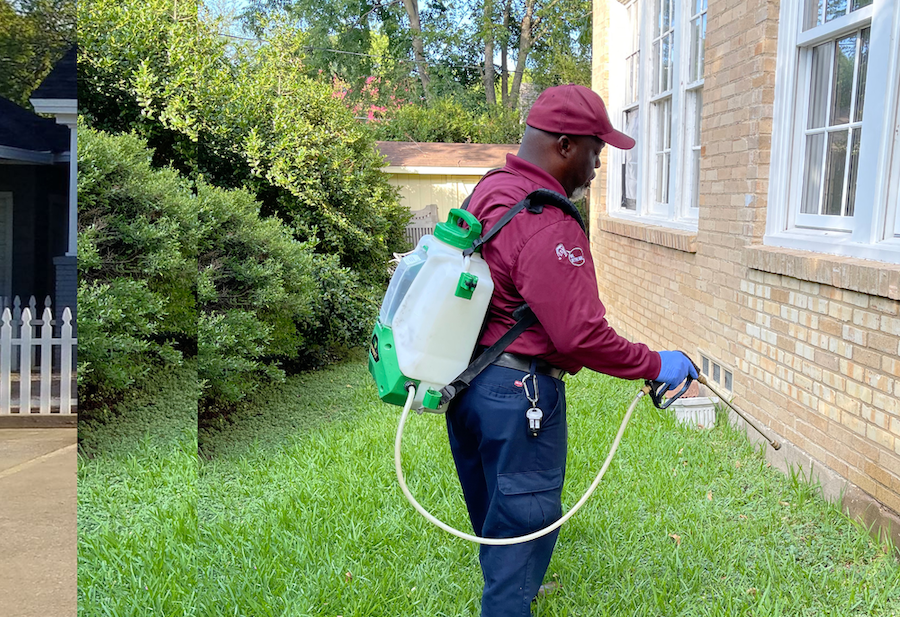Bed Bug Therapy Break Down: Contrasting Chemical Vs. Non-Chemical Solutions
In the world of parasite control, especially when taking care of the persistent issue of bed pests, the choice between chemical and non-chemical therapy remedies can be a pivotal one. Both strategies supply distinctive benefits and downsides, influencing elements such as performance, security factors to consider, and general expense. By checking out the nuanced information of each technique, a clearer understanding of which path to pursue in dealing with a bed insect invasion can be acquired.
Efficiency of Chemical Treatments
Chemical treatments for bed bug problems have actually been extensively identified for their fast and potent efficiency in removing these bugs. When taking into consideration the efficiency of chemical therapies, it is important to recognize that they can provide a fast and detailed option to a bed pest problem.
Moreover, chemical treatments have the benefit of providing recurring impacts, meaning that they can remain to remove bed insects even after the first application. This residual activity is specifically helpful in combating any kind of possible re-infestations. In addition, the quick activity of chemical treatments can bring relief to individuals dealing with serious bed insect problems, permitting them to regain control of their home promptly.
Safety Worries With Chemical Solutions
One essential aspect that calls for cautious factor to consider when making use of chemical remedies for bed insect treatment is ensuring the safety and security of owners and the environment. While chemical therapies can be effective in eliminating bed insects, they might posture dangers if not handled properly. One of the main safety and security interest in chemical remedies is the prospective injury they can cause to human health and wellness. Exposure to particular chemicals used in bed pest therapies can cause respiratory system issues, skin irritability, or other negative responses, specifically in individuals with pre-existing problems or sensitivities. In addition, inappropriate application or dose of chemical pesticides can lead to harmful residues lingering in the treated area, posturing lasting health and wellness threats to passengers.
Furthermore, the environmental influence of chemical services is another considerable consideration. Some chemicals used in bed pest therapies might be damaging to useful insects, wildlife, and environments if they seep into the soil or water supply. It is important to make use of chemical treatments sensibly, following safety and security standards, and considering less poisonous alternatives to alleviate these dangers and make certain the effective and risk-free administration of bed insect invasions.
Advantages of Non-Chemical Strategies
Thinking about the prospective security concerns and ecological influence associated with chemical remedies for bed bug therapy, discovering non-chemical approaches provides an appealing choice with several unique advantages. Non-chemical therapies are ecologically friendly, as they do not add to air or water contamination, making them a sustainable choice for parasite control.
In addition, non-chemical options can be effective in targeting bed pests, including hard-to-reach areas where chemical therapies may not penetrate. Methods such as warm therapy, vacuuming, vapor cleansing, and bed mattress encasements give detailed eradication without using hazardous chemicals. Additionally, non-chemical methods can be less disruptive, calling for minimal preparation and allowing for quicker reentry right into treated areas. Generally, going with non-chemical bed pest therapy techniques not just focuses on safety and environmental defense however additionally ensures comprehensive and reliable insect control.
Limitations of Non-Chemical Treatments

Furthermore, non-chemical therapies commonly call for multiple applications to accomplish effective obliteration. This can be time-consuming and might not constantly guarantee complete removal of all bed insects and their eggs, specifically in concealed or hard-to-reach locations.
Moreover, the success of non-chemical treatments greatly relies upon correct application and thoroughness, which can be testing for people without specialist competence. Insufficient application of non-chemical approaches might cause insufficient eradication, leading to relentless invasions and the requirement for additional treatments.
Therefore, while non-chemical therapies have their benefits, it is important to recognize these restrictions and consider them when establishing one of the most reliable strategy for handling bed pest infestations.
Cost Contrast: Chemical Vs. Non-Chemical Options
Given the restrictions connected with non-chemical treatments, a necessary aspect to evaluate in the context of bed pest monitoring is the price comparison in between chemical and non-chemical options. In comparison, non-chemical treatments like warmth treatment or steam can be more costly, with expenses ranging from $1,000 to $6,000 for a whole home. While the first price of chemical treatments might appear reduced, numerous therapies might be called for to fully eradicate the problem, potentially boosting the general expense.
Final Thought

Considering the prospective security problems and ecological impact linked with chemical options for bed bug therapy, checking out non-chemical approaches presents an encouraging choice with several distinct advantages.Given the restrictions associated with non-chemical therapies, an important aspect to assess in the context of bed bug management is the price comparison between chemical and non-chemical options. In contrast, non-chemical treatments like warmth therapy or vapor can be more expensive, with expenses varying from $1,000 to $6,000 for an entire home. While the preliminary price of chemical treatments might seem lower, several therapies may be needed to fully eradicate the invasion, potentially increasing the total cost.In conclusion, when comparing chemical and non-chemical bed bug treatment options, it is important to think about effectiveness, security, benefits, restrictions, and cost.
Comments on “A1 Pest Control Charlotte NC Bed Bugs - Specialist Extermination Services”